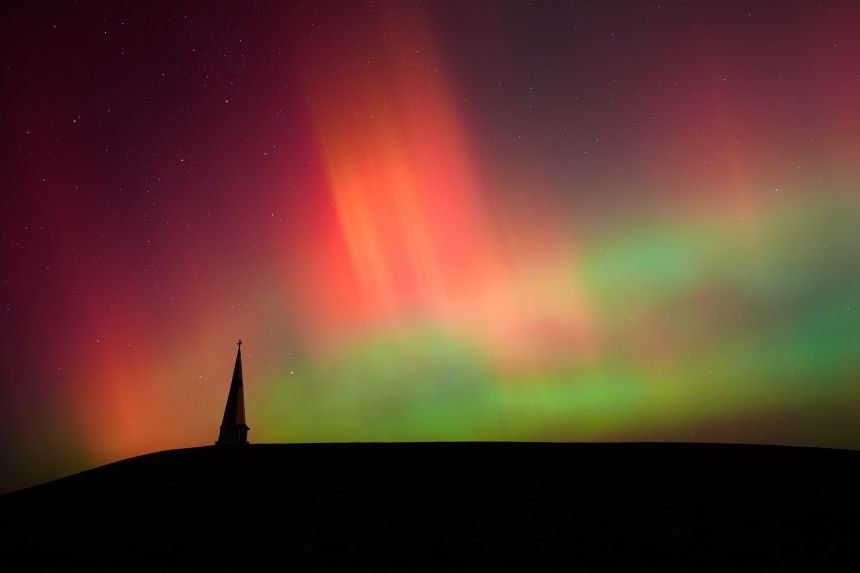A powerful burst of energy from the sun is streaming past Earth, disturbing energized particles in the highest levels of the atmosphere and painting stunning aurora borealis displays across the night sky as far south as Texas, Alabama, Georgia and even Florida.
Several eruptions of energy from the sun, known as coronal mass ejections, or CMEs, are expected to reach Earth’s magnetic field over the next two nights. The Space Weather Prediction Center issued a G4 “severe” geomagnetic storm watch for Tuesday and Wednesday. G4 is the second-strongest level on the five-step scale.


Geomagnetic storms happen when the solar wind rushes through Earth’s magnetosphere. Charged particles from the sun interact with gases in the Earth’s atmosphere, causing stunning northern lights, or glowing curtains of green, red and purple light that ripple across the sky.
😍 We can’t feel our fingers because it’s so cold outside, BUT we snagged some amazing photos of the aurora from our office out here in Mobile, AL. This was visible to the naked eye. pic.twitter.com/7bZGAGsIAp
— NWS Mobile (@NWSMobile) November 12, 2025
It’s not all beauty and wonder; a G4 storm brings potential for voltage control problems in power systems, GPS navigation errors and intermittent issues with radio and satellite operations.
This latest round of solar eruptions includes several CMEs from an active sunspot cluster. Shawn Dahl, a space weather forecaster at the Space Weather Prediction Center, notes that an additional, even stronger CME is expected midday Wednesday — along with the chance to see the northern lights farther south than normal.
For most people, the impacts will be limited to breathtaking skies, not power outages. But it’s a good reminder that no matter how advanced we become as a society, the sun still calls the shots.
Did you catch the light show between the breaks in the clouds this evening? #NorthernLights
Space Weather Center: https://t.co/M5cIvJxUr1 pic.twitter.com/RiDXgF3BqI
— NWS Reno (@NWSReno) November 12, 2025
